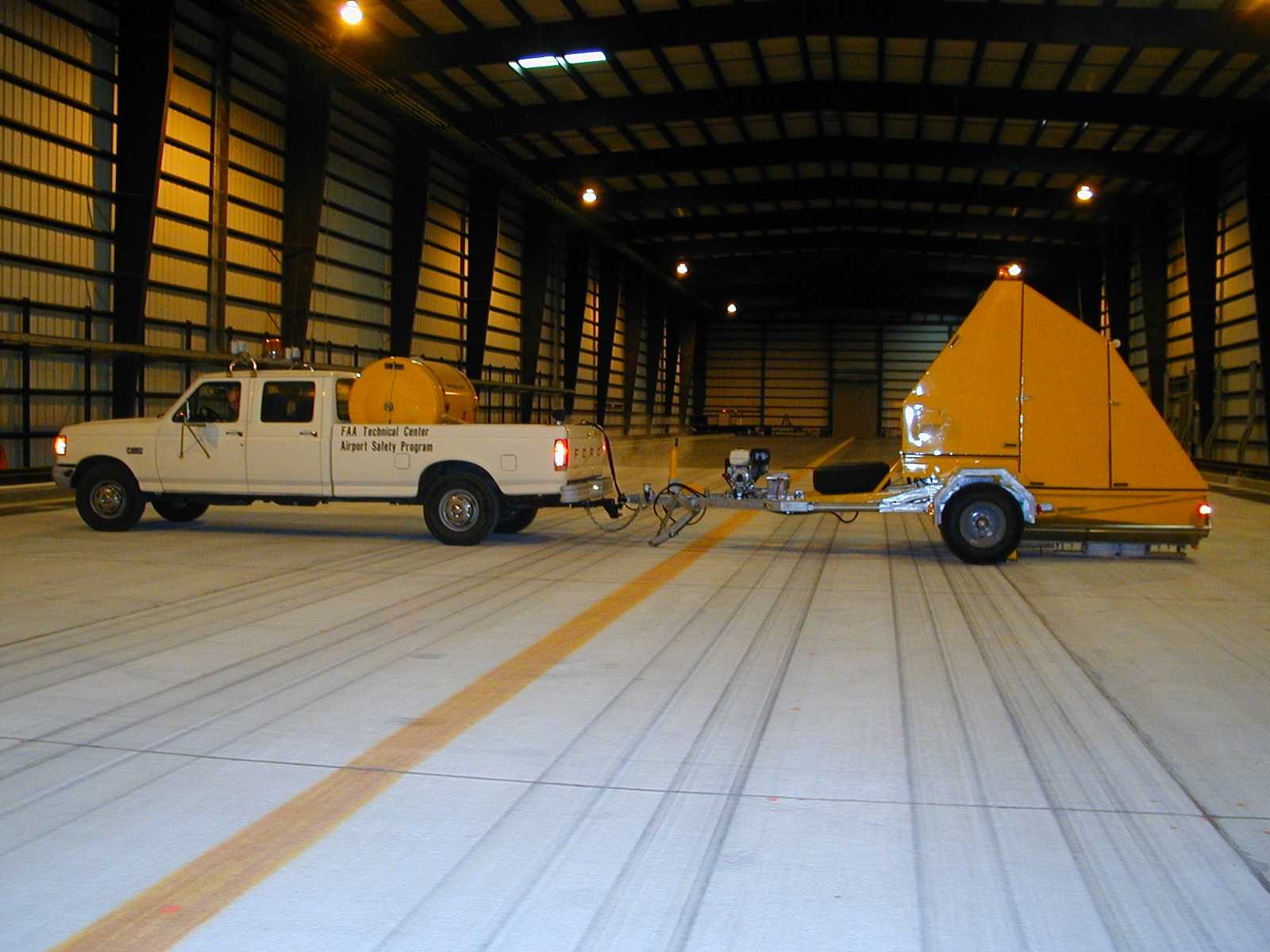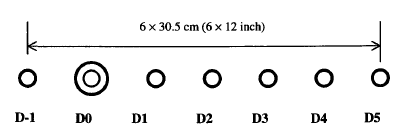CC1 Rigid Non-Destructive Testing (NDT) Plan and Data
Heavy Weight Deflectometer (HWD) Test
The Heavy Weight Deflectometer (HWD) test simulates aircraft wheel loads by dropping a load onto the surface of the pavement and measuring accompanying surface deflections. The KUAB Model 240 HWD device was used for evaluation of the test pavements at the NAPTF for CC1. The KUAB operates on the principle of dropping weights on a series of hard, rubber buffers separated by a second series of weights and buffers which are connected to a loading plate resting on the pavement surface.

FAA’s KUAB Model 240 HWD Equipment (Click to Zoom)
The main objectives of conducting HWD tests were to verify the uniformity of the pavement construction, particularly subgrade strength; investigate the pavement deterioration with traffic and to determine the joint load transfer efficiencies. For CC1 tests on rigid test items, one sensor was positioned at the center of the load plate (D0), and another sensor was positioned 12 inches in front of the plate along the path of the vehicle (D-1). This allows the HWD unit to be positioned such that the D-1 sensor is on the opposite side of a joint from the load plate to evaluate the load transfer efficiency. The remaining five sensors were positioned behind the plate at 12 inch (305 mm) spacing.

Location of the Deflection Sensors (Click to Zoom)
The HWD data collected prior to the application of traffic indicated significant increase of curling in the slabs from summer to the winter of 1999. Test items on low and medium strength subgrades showed similar deflection responses. Pavements on high strength subgrade showed lower deflections.
The deflections of transverse joints were higher than the longitudinal joints due to lower load transfer efficiency of the dummy joints.
Comparing the average deflections for the center of slabs for winter and summer testing, values were fairly compatible within each test item. However, for the longitudinal and transverse joints as well as corners, deflections were higher in the winter testing compared to summer due to the higher upward curling in winter time.
Comparing the joint load transfer efficiency for low, medium and high strength subgrades, no significant influence of subgrade CBR was observed for dowelled joints. In dummy joints however, slabs on higher strength subgrade test items showed more curling compared to the lower strength subgrade test items.
Return to Construction Cycle 1 Main Page